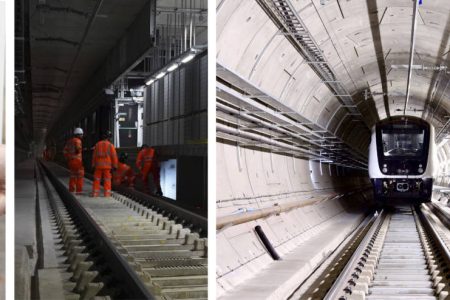LOCKEN – ISEO Group – which has installed its solution at more than 300,000 sites since 2003 highlights how smart access solutions are already meeting the many security challenges identified in the Protect Duty consultation.
The rail industry is a prime example of where the Protect Duty is required, in order to ensure the public is better protected from a “multifaceted, diverse and continually evolving” terror threat. Representing the country’s major infrastructure, with a multitude of public spaces that see high numbers and a constant stream of visitors, railways and trainlines require the highest possible levels of physical security protection.
On 10 January 2022, the Government published its response to the Protect Duty public consultation, which ran from February to July last year seeking views from stakeholders on how the incoming legislation can make the public safer, including a legal requirement for some public places to ensure preparedness for and protection from terrorist attacks.
What are the main concerns surrounding security and access control within rail transport?
The main priority is to ward off any malicious intrusion attempts and potentially devastating consequences.
The sheer size of the infrastructure within this industry is much greater than any other, with hundreds of miles of fencing along railway lines and thousands of gates requiring high levels of protection. They are also made up of electrical substations, technical installations (lifts, ventilation systems, pumps, etc) and tunnel shafts for aeration purposes.
Another challenge involves dealing with unforeseen incidents, such as fires and passenger accidents. It is essential that the emergency services can reach the site of an incident unimpeded when necessary.
What are the access control requirements?
All areas within the rail infrastructure need tailored access control solutions, which meet the requirements of each location and user.
Given the complexity of the infrastructure, composed of sprawling or isolated sites and including tunnels and railway emergency exits, locks without cable are mandatory. Easy installation and minimal maintenance are also required. It means that the keys must supply the required power and access rights to the cylinder.
As service quality is an issue, a seamless, standardised access control solution is needed to allow maintenance companies and staff easy access to the right place at the right time.
How does LOCKEN work with the rail industry to mitigate challenges?
We provide a bespoke approach when working with all industries, in order to meet the individual needs of each organisation and business sector. We are committed to delivering the best solution, based on our state-of-the-art access management software and latest-generation induction electronic key. This contactless technology allows instant opening of the cylinders and unrivalled durability. The cylinders are also compatible with mechanical locks, which may prove useful when accessing fewer sensitive areas. A single electronic key with the necessary access rights can open a vast number of locks and replace cumbersome bunches of keys. This frees up technicians when opening gates or moving between sites.
When it comes to the Protect Duty, technology is a force multiplier, it can extend the range of safety and security features, improve operational efficiency and accelerate decision making, helping businesses to significantly boost their compliance with the Government and industry’s security standards and ultimately increasing protection against some of its biggest threats.
How flexible is LOCKEN’s electronic access control solution?
All keys are controlled by the same software and managers can accurately configure each key according to the users. Any openings or attempted break-ins are logged in the electronic key’s memory and sent to the central software.
The Bluetooth version of the key offers even greater control, as access rights can also be updated on site using a smartphone and MyLocken mobile app. This approach ties in with increasingly strict security policies.
How do you ensure the reliability and robustness of the solution?
Our electronic key has the IP 66-67-68-69 rating, meaning it’s designed to protect against intrusion from foreign bodies and pressurised water jets, and particularly hardy in the event of damp, rain and dust. The cutting-edge contactless induction technology prevents any poor communication caused by corrosion.
The cylinders have CEN 1303 certification, which guarantees their resistance to drilling and vandalism.
How does the solution deal with unforeseen incidents?
The electronic access control solution comes with a backup key configured with unlimited rights. This gives the fire brigade and police round-the-clock access to all areas, with no need to update access rights.
Access control puts businesses one step ahead
There is currently no legislative requirement for organisations or venues to consider or employ security measures at the vast majority of public places, but that doesn’t mean that many businesses aren’t already taking it upon themselves to ensure they go above and beyond to protect the public.
LOCKEN welcomes the Government’s Protect Duty proposals, supporting tougher security requirements to ensure organisations are prepared and protected against terrorist attacks.
Our customers in the telecommunications, energy, water distribution, transport, manufacturing and banking industries, as well as many local authorities, will find themselves ‘one step ahead’ when the Government’s Protect Duty comes into force, already able to demonstrate how the implementation of our smart access solution is enabling them to meet these critical requirements.













